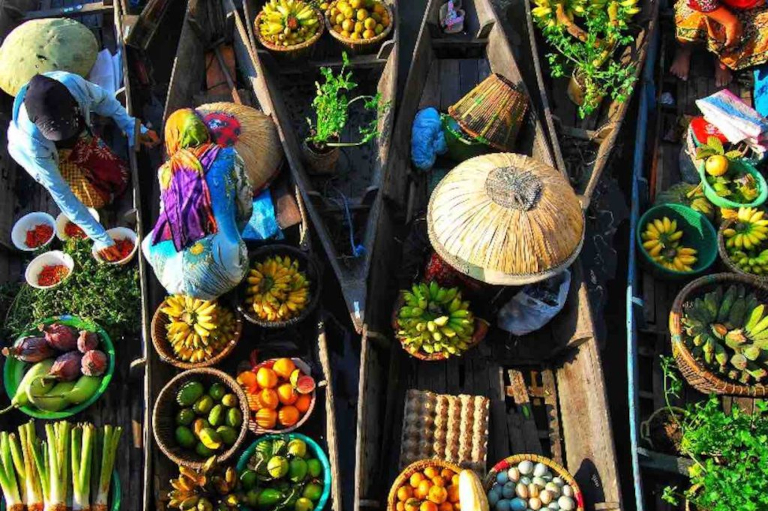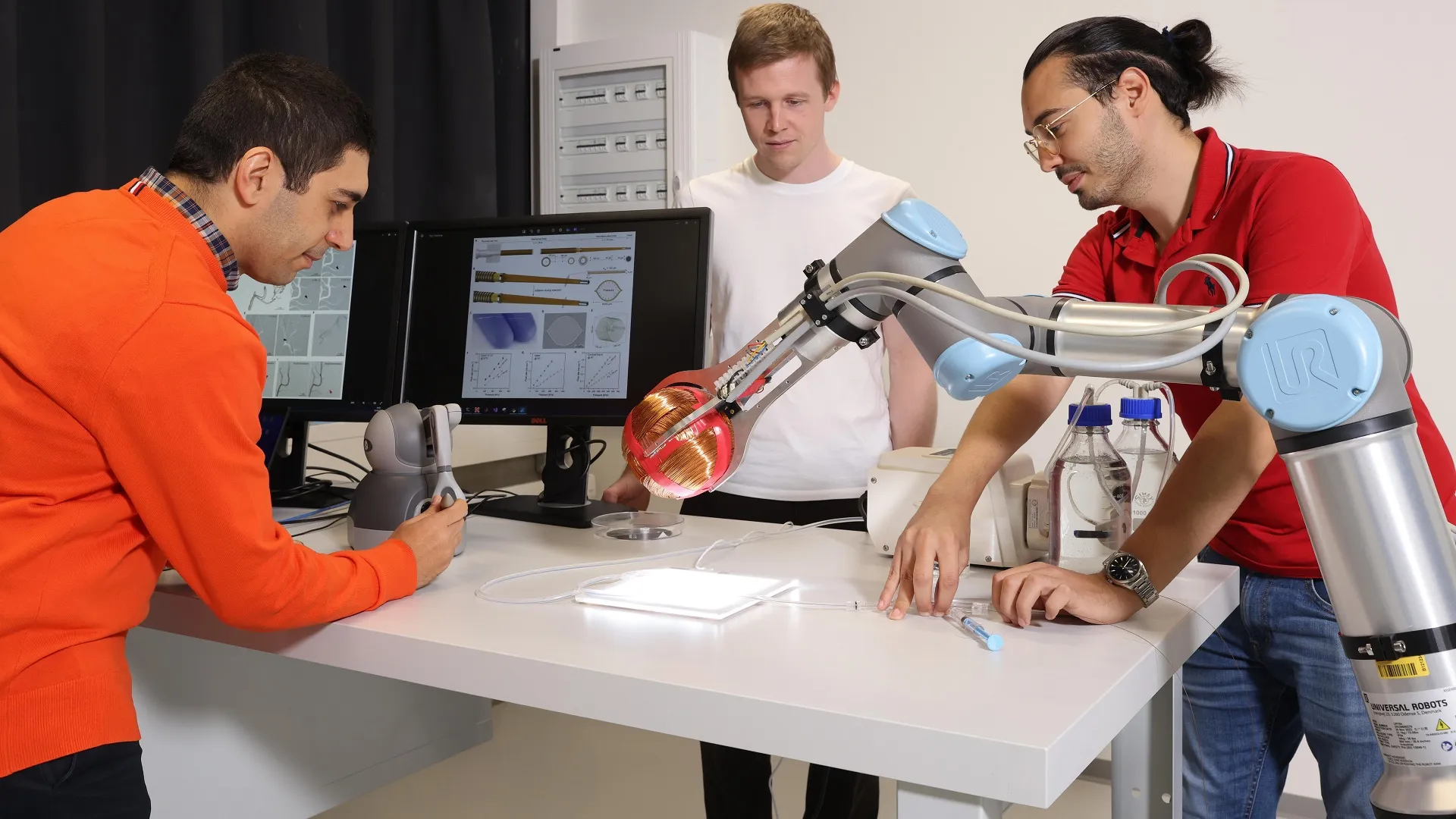Copyright Resilience

“Better production ultimately means … protecting soils instead of depleting them, it means using water more wisely, it means bringing back diversity and local solutions.”– Beth Bechdol, Food and Agriculture Organization of the United Nations (FAO) Deputy Director-General, on the FAO’s World Food Day 2025 opening plenary Anyone who tuned into the FAO’s World Food Day programme last week would be forgiven for coming away feeling that the world’s food system is in good hands. Now wouldn’t that be a relief? Because, currently, the global food system is the single largest driver of climate breakdown, ecosystem degradation, pollution and preventable disease, and the number of hungry human mouths to feed is 800 million and rising. Wouldn’t it be nice if the UN truly had a cohesive, holistic plan to transform the global food economy into something that works for both people and planet? The good news is such a plan exists. The bad news is the UN doesn’t have it. There is a way to produce considerably more food per acre while restoring soils, supporting biodiversity, and healing ecosystems. There is a way to feed the world and save the planet. But that would mean going directly against what our governments – and the agribusiness interests that influence them – have been funding for decades. The Top-down Plan Global traders have known, since the time of colonialism, that they could extract a buck by replacing diversified local food economies with monocultures for export. After World War II, multinational corporations – the successors of the colonial merchants – promoted agrichemicals and machinery to create a global food market where countries would grow their economies by increasing production for export. This was backed by the comforting idea that industrial agriculture would “feed the world” and global trade would maintain international “harmony.” But warping farming, forestry, and fishing to serve distant middlemen has meant imposing a deadly uniformity on the natural world. Monocultures [i], factory farms, mega-trawlers, and vast plantations all result from pressures imposed by globalised markets. The system demands mass-produced, uniform products: perfectly round apples or tomatoes bred to fit machinery. Anything that doesn’t conform – sometimes the majority of the harvest – is discarded.[ii] A far cry from its promises to feed the world, the global food economy has destroyed small farmers and created endemic hunger worldwide. By cornering smallholders into export crops like sugar cane, wheat and cotton, governments have left farming communities dependent on a volatile global market for food, in which speculators in Beijing and New York can swing commodity prices overnight.[iii] In the same way, the average shopper at the supermarket is left vulnerable to price hikes, corporate gouging, and supply-chain disruptions.[iv] The supposed “efficiency” of large-scale, industrial food production has nothing to do with growing more food, providing better nutrition, or using less land. It simply has to do with producing food with fewer people by using energy and technology instead. That energy and technology is subsidised[v] – through public R&D, mining support, and even the military-industrial complex that ensures access to oil and minerals. These forces conspire to make food from the other side of the world cost less than food from the farm down the road. The result is a system that could hardly be more polluting and wasteful. Norwegian fish are shipped to China to be deboned, then sent back to Norway for sale. Argentinian pears are packed in Thailand and sold in the USA. Germany is both the world’s largest importer, and largest exporter, of milk.[vi] Transformation, sure. But, to what? “We need to move away from the fragile, consolidated supply-chains we have, into a new world of more local production, more diverse production, more mixed farming for local consumption. What is really needed is restructuring of the markets to invert the business model.”– Tim Banton on the FAO’s World Food Day 2025 opening plenary Awareness about the destructiveness of the global food economy has become so widespread that large institutions are now forced to address it in the open. At the FAO Summit, the UN hyped a “transformation” of the global food system, and gave the floor to voices critical of globalised supply chains and corporate-led farming. Even big businesses have become remarkably proficient at speaking the language of “regenerative,” “diverse,” “local solutions” and “farmer-led.” But, in today’s world, rhetoric has been divorced from reality. Sure enough, if you follow the money instead of the language, you see a very different kind of transformation underway. The newest iteration of the globalizing trajectory is a rollout of agritech and A.I.-based farming. Venture funding for agrifood tech hit $16 billion in 2024.[vii] The World Bank plans to double agribusiness and ag-finance commitments to $9 billion annually by 2030.[viii] “Smart” farming systems, satellite-linked sensors and A.I. crop models are being rolled out from California to the Indian subcontinent.[ix] Carbon track-and-trace technologies turn producers and their lands into commodities to be traded in a new centralised marketplace. Described not only as more efficient but also more sustainable, the truth is that the “AgTech revolution” is linked to a global mining machine to supply the fossil fuels, uranium, steel, and rare earth metals to feed the batteries, the sensors, and to build up a global network of drones linked to satellites for collecting data. The cumulative effect is straightforward — the infrastructures and software packages pull once-decentralised communities into the orbit of profit-oriented multinationals. They create chokepoints where a handful of deep-pocketed businesses and banks set standards, control who plugs in, and capture value. It is not that those pulling the strings are out to destroy the planet and take food from the mouths of peasants. Rather, their knowledge is so narrow and specialised, and they are so distant from the ground, that they are blinkered to the real-world effects of their schemes. So, we find ourselves in a confusing situation. On the floor of international UN talk-shows, the issues can no longer be ignored, and aspects of the truth shine through. But on the ground, the global machine rolls on – its engineers convinced that the next upgrade will fix the damage caused by the last. The View from the Ground Despite all the grand talk, anyone with their hands in the soil knows it is becoming harder and harder to survive as a small-scale farmer practicing agroecology and polyculture. So it’s no surprise small farmers have been protesting the rules of the global economy for decades, fighting for life in the face of agribusiness takeover. One organisation alone, La Via Campesina, represents over 200 million small farmers, fishers, and pastoralists in campaigning for land rights and local food sovereignty. They are pushing back against the neo-colonial trade rules that continue to destroy their livelihoods. Despite being possibly the largest social movement in the world, their message has largely gone unheard by those in the industrialised west. Yet the benefits of growing small, slowing down and going local are intuitive and common sense, and a grassroots local food movement is flourishing against the grain. In the subtropics of Australia, young farmers are bringing life back to degraded paddocks by integrating market gardening with agroforestry. With careful hands and watchful eyes, they tend semi-wild ecosystems filled with fruit and fodder trees, vines, root crops, herbs, chickens, and lush vegetable patches. On less than a hectare, these farms can produce more than a hundred food and medicine products in a single year. In the Himalayas of Western Tibet, traditional barley and buckwheat fields coexist with apple and apricot orchards, greening glacial valleys and sustaining a thriving culture in a harsh environment. Local entrepreneurs experiment with mushrooms alongside market gardens perfected by their grandmothers’ hands. Projects like these may seem small when set against the giants – Unilever, Nestlé, Bayer – but they offer glimpses of what our food system could look like: a multiplicity of diverse, interlinked local systems. Small-scale farming could feed us on a large scale, if only our economy were designed to localise rather than globalise the market. The Logic of Local – In the Head and in the Heart Local markets don’t demand countless tons of perfectly straight carrots or thousands of identical cuts of meat per day. They prefer variety, and they reward diversity. Thus, localised farms are not monocultures sprayed with chemicals – they’re mosaics of life. They also produce much more food per acre – often five times as much – than industrial farms.[x] With local markets as their economic cornerstone, diversified farms can bring back biodiversity, rebuild topsoil, and restore watersheds in diverse landscapes.[xi] A local market also allows farmers to respect nature’s rhythms. Whereas industrial cherry or almond orchards require chemical forcing for uniform fruiting to suit mechanical harvesters, local farmers benefit from staggered fruiting and seasonal variation. This flexibility breeds real resilience (another buzzword prone to co-optation) in an unstable climate. Perhaps most importantly, the logic of local is in the heart. People are intuitively yearning to reconnect with the sources of their food. When supported as dignified, secure livelihoods, local food economies offer profoundly attractive work. To grow food, to tend soil and seed, to feed your community – these are among the most meaningful acts a person can do. A local food economy offers a homecoming to community and nature – the chance to be in conversation once again with the people, the land and the waterways on which we ultimately depend.[xii] In East London, the Bromley by Bow Centre prescribes community gardening for depression and anxiety, with results that far exceed the effectiveness of pharmaceuticals. “As the garden flourished,” one participant reflected, “so did we.” The same could be said of humanity at large. To localise our food systems is not just to reform an economy – it is to rekindle relationship, to recover our humanity. At a time when human beings have been turned into ‘consumers’ – isolated nodes in a centralised system, sourcing plastic packaged foods off cold supermarket shelves from who knows where – the intuitive desire to be whole, human, and connected again is one of the biggest factors contributing to the rise of a local food movement in almost every country. Feeding the World and Saving the World – It’s up to us! The propaganda surrounding the digital takeover of agriculture insists that young people don’t want to farm – they’d rather push buttons on screens. But that story is already outdated. Across the world, a new generation is returning to the land. From peri-urban farms outside Melbourne to community gardens in Detroit to cooperatives in Kerala, young people are trading office cubicles for the open sky, computer keystrokes for seeds and soil. Supporting this movement would actually be far easier – and far less expensive – than to continue the ongoing displacement of populations, urbanisation, destruction of ecosystems, and scaling up of technological infrastructure involved in the top-down, globalist plan. It would be easier to listen to the global peasant movement and support them to stay where they are and do what they do. It would be easier to support young farmers and the local food economies which are already emerging naturally, without the support of policy. It would be easier to localise the production of our basic needs than to ship products around the world and back again. This is the shift that can feed the world by producing much more food per acre with less energy, minerals and chemicals. This is the shift that can return health and life to ecosystems, rebuild soils and restore watersheds, contributing to long-term food security and the flourishing of the planet. This is the shift that provides more meaningful livelihoods while reweaving the fabric of community interdependence that makes life rich and joyous. But for this movement to work its wonders, we all need to get involved. We can’t leave it to farmers, whose workload is already heavy. We can’t leave it to blinkered economists and politicians. And, despite their proficiency in all the right language, we can’t leave it to the FAO. We need people to be involved, consumers to take a stand. We need a global, cross-sectoral movement for localisation. [i]Rodríguez-Cohard, J. C., Lombardo, P. B., Sánchez-Martínez, J. D., & Garrido-Almonacid, A. (2023). Territorial impacts of the monoculture-based agri-food industry: Comparative analyses on two continents. Applied Geography, 175, 102-254. [ii]Quantifying Postharvest Loss and the Implication of Market‑Based Decisions: A Case Study of Two Commercial Domestic Tomato Supply Chains in Queensland, Australia McKenzie, T. J., Singh-Peterson, L., & Underhill, S. J. R. (2017). Horticulturae, 3(3): 44. [iii]This has led to a cruel irony: fully half of the 800 million hungry people in the world today are themselves farmers. [iv]Schladen, M. (2024, April 2). Trade watchdog: Big retailers used supply-chain problems to inflate grocery costs. Kentucky Lantern. [v]Gorelick, S. (2002). Small is Beautiful, Big is Subsidized. Local Futures/ISEC. [vi]TradeImeX. (2024, July 9). Global dairy trade: Top importers and exporters of dairy products. [vii]AgFunder. (2025, March 7). Global agrifood tech funding rebounds after two-year slump. [viii]World Bank. (2024, October 23). World Bank Group announces strategic pivot in agribusiness, doubles financial commitment. [ix]Farmonaut. (2024). AI & satellite real-time crop monitoring for precision farming. [x]This is consistently proven in studies, e.g. Schöb, C., et al. (2021). Mixed cultures for a greater yield. ETH Zurich., and Ünal, F. G. (2008). Small is beautiful: Evidence of an inverse relationship between farm size and yield in Turkey (Working Paper No. 551). Levy Economics Institute. [xi]See, for example, Ricciardi, V., et al. (2021). Higher yields and more biodiversity on smaller farms. Nature Sustainability. [xii]In 2010, a study showed that people have ten times more conversations at a farmers’ market than at a supermarket. Today, with AI bots replacing checkout employees, it’s easy to imagine this figure might be much higher. Teaser image credit: Author supplied.



